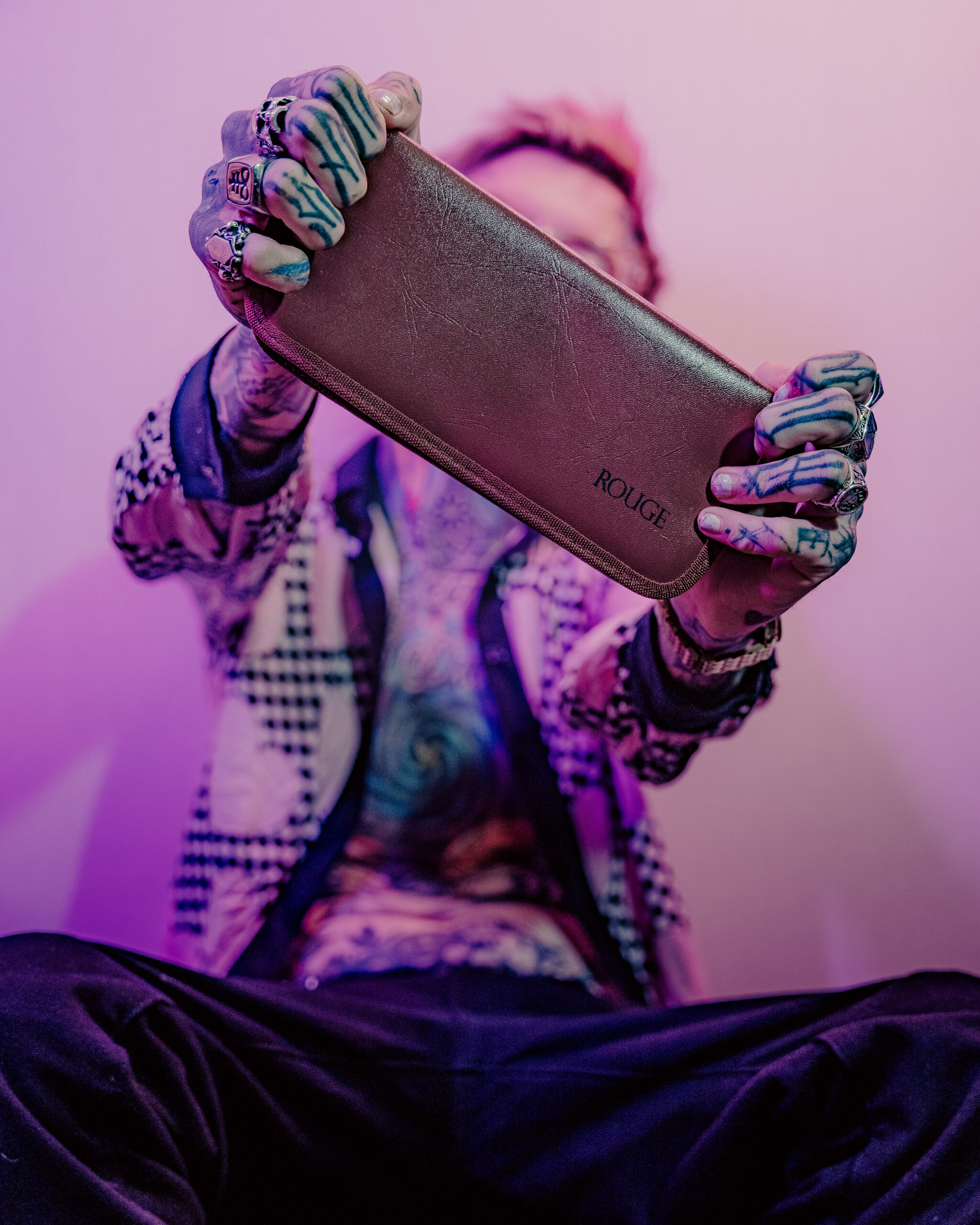Queerbaiting
Queerbaiting has become a pervasive issue in media and dating, blurring the lines between genuine representation and manipulative tactics. While it can appear as inclusive, queerbaiting ultimately relies on exploiting LGBTQ+ themes and imagery without delivering authentic portrayals or fostering meaningful connections.
Definition
Queerbaiting refers to the practice of creating content that suggests LGBTQ+ representation, often through subtle hints or suggestive storylines, but ultimately failing to deliver genuine queer characters or relationships. It utilizes queer tropes and symbols for marketing purposes, appealing to a wider audience while avoiding the commitment of authentically portraying LGBTQ+ experiences.
Examples in Media
One prominent example of queerbaiting can be seen in television shows that feature “will-they-won’t-they” storylines between characters who appear to have romantic tension. While viewers are left anticipating a potential same-sex relationship, the show ultimately avoids explicitly depicting it, leaving fans frustrated and unsatisfied.
Movies often resort to queerbaiting by casting popular LGBTQ+ actors in roles with ambiguous sexualities. The presence of these actors may attract LGBTQ+ audiences, but their characters rarely explore their identities or engage in meaningful same-sex relationships.
Even within music videos and advertisements, queerbaiting can manifest through suggestive visuals, imagery, and lyrics that allude to queer themes without explicitly confirming them. This tactic aims to create a fleeting sense of inclusion while avoiding any real commitment to LGBTQ+ representation.
Impact on LGBTQ+ Individuals
The impact of queerbaiting on LGBTQ+ individuals is multifaceted and often deeply damaging. It perpetuates harmful stereotypes and reinforces the idea that LGBTQ+ relationships are simply a marketing tool rather than something to be celebrated and explored authentically.
For many LGBTQ+ viewers, queerbaiting can create a sense of false hope and disappointment. They invest in characters and storylines, only to be left feeling unseen and unheard when those promises remain unfulfilled. This can lead to feelings of frustration, anger, and ultimately a sense of disillusionment with media and representation.
Furthermore, queerbaiting contributes to the normalization of excluding LGBTQ+ stories from mainstream media. By suggesting inclusion without delivering it, it reinforces the notion that these narratives are somehow less deserving of full and honest portrayals. This can have a chilling effect on genuine LGBTQ+ creators and audiences alike.
Actual Representation
True representation of LGBTQ+ individuals in media and dating is crucial for fostering inclusivity and understanding. It goes beyond fleeting allusions or suggestive tropes; it demands authentic portrayals that reflect the complexities and diversity of LGBTQ+ experiences.
Importance of Authentic Portrayals
Authentic representation in media and dating means portraying LGBTQ+ individuals as complex, multifaceted human beings with rich inner lives, diverse relationships, and genuine experiences. It involves going beyond stereotypes and clichés, showcasing the full spectrum of LGBTQ+ identities, struggles, and joys.
Accurate portrayal is crucial because it combats harmful stereotypes and misinformation that perpetuate prejudice and discrimination. It allows LGBTQ+ individuals to see themselves reflected in media and feel seen and understood. It also educates non-LGBTQ+ audiences about the realities of LGBTQ+ lives, fostering empathy and promoting acceptance.

True representation in dating involves being honest about one’s sexuality and intentions from the outset, building relationships based on genuine connection and respect. It means creating safe and inclusive spaces where LGBTQ+ individuals can connect with others without fear of judgment or exploitation.
Positive Impact on Viewers and Society

Actual representation goes beyond mere allusions to queer themes. It demands authentic portrayals that reflect the complexities and diversity of LGBTQ+ experiences. This means showcasing a wide range of identities, relationships, and stories that go beyond stereotypes and clichés.

Positive impacts of actual representation are multifaceted. For LGBTQ+ individuals, it fosters a sense of belonging and validation, allowing them to see themselves reflected in media and feel seen and understood. It combats harmful stereotypes and misinformation, promoting empathy and acceptance within society.
Furthermore, authentic representation encourages positive social change by normalizing diverse identities and challenging discriminatory attitudes. It creates a more inclusive and equitable world where LGBTQ+ individuals can thrive freely and authentically.
Examples of Good Representation in Media
Actual representation in media involves portraying LGBTQ+ characters and storylines with authenticity and depth. It goes beyond surface-level nods or token gestures, instead focusing on telling nuanced stories that explore the complexities of LGBTQ+ experiences.
A prime example is the television series “Sense8,” which featured a diverse cast of characters from around the world who form a psychic connection. The show explored themes of identity, acceptance, and love in a sensitive and groundbreaking way, showcasing the richness and diversity within the LGBTQ+ community.
Another example is the film “Moonlight,” which tells the coming-of-age story of a young black man navigating his sexuality and identity. The film’s honest and unflinching portrayal of Chiron’s journey resonated with audiences worldwide and earned critical acclaim for its sensitive and authentic depiction of a marginalized experience.
In the realm of literature, authors like Alison Bechdel (“Fun Home”) and Casey McQuiston (“Red, White & Royal Blue”) have created compelling narratives that center LGBTQ+ characters and explore their relationships with nuance and depth. These works challenge stereotypes and offer insightful glimpses into the lives of LGBTQ+ individuals.
Authentic representation in media is vital for fostering empathy, understanding, and acceptance. It allows LGBTQ+ individuals to see themselves reflected on screen and feel validated. It also educates non-LGBTQ+ audiences about the diversity of human experiences, breaking down barriers and promoting inclusivity.
Consequences of Queerbaiting vs. True Representation
Queerbaiting, a practice prevalent in media and dating, involves exploiting LGBTQ+ themes for marketing purposes without delivering genuine representation. While it may appear inclusive, queerbaiting ultimately leaves viewers frustrated and reinforces harmful stereotypes about LGBTQ+ relationships. True representation, on the other hand, goes beyond superficial allusions to queer themes and strives to portray LGBTQ+ individuals with authenticity, complexity, and depth.
Perpetuation of Harmful Stereotypes
Queerbaiting thrives by manipulating audience expectations, creating a sense of anticipation that ultimately goes unfulfilled. This can be particularly damaging for LGBTQ+ viewers who are actively seeking representation and connection within media and dating. It fosters a cycle of disappointment, making it harder to trust authentic portrayals when they do emerge.
The perpetuation of harmful stereotypes through queerbaiting reinforces damaging misconceptions about LGBTQ+ individuals and relationships. It contributes to the normalization of prejudice and discrimination by presenting an incomplete and often distorted view of LGBTQ+ lives.
True representation, in contrast, offers a powerful antidote to these harmful narratives. By showcasing diverse LGBTQ+ experiences with honesty and nuance, it challenges stereotypes, fosters empathy, and creates space for meaningful connection and understanding.
Erosion of Trust in Media
Queerbaiting, the practice of suggesting LGBTQ+ representation without delivering it, erodes trust in media by playing on audience expectations. It creates a false sense of hope followed by disappointment, leading viewers to question the sincerity of future portrayals.
When media repeatedly uses queerbaiting tactics, audiences become wary of genuine representation, unsure if what they see is truly authentic or simply another manipulative ploy. This cynicism can make it harder for LGBTQ+ individuals to find meaningful connections and feel seen within media and dating.
Authentic representation, on the other hand, builds trust by delivering on its promises. When LGBTQ+ characters are portrayed with depth, complexity, and honesty, viewers feel validated and respected. This fosters a sense of authenticity that encourages continued engagement with inclusive content.
Impact on LGBTQ+ Relationships and Dating
Queerbaiting creates unrealistic expectations within the LGBTQ+ community, leading to feelings of disappointment and frustration when those expectations aren’t met. It can contribute to a feeling of isolation and invalidation for those seeking genuine representation in media and dating.
True representation fosters a sense of belonging and acceptance within the LGBTQ+ community by showcasing diverse experiences and relationships that resonate with real-life realities. When LGBTQ+ individuals see themselves reflected authentically in media and dating, it validates their identities and strengthens their self-esteem.
For non-LGBTQ+ individuals, true representation educates and promotes empathy by breaking down stereotypes and misconceptions. It allows them to understand the complexities of LGBTQ+ lives and develop a more inclusive worldview.
In dating, queerbaiting can lead to situations where individuals are misled about someone’s genuine intentions. This can result in emotional hurt and distrust within relationships. Honest communication and transparency about one’s sexuality are crucial for building healthy and fulfilling connections.
True representation in dating means being open and honest about one’s identity and desires from the outset. It involves creating safe spaces where LGBTQ+ individuals can connect with others without fear of judgment or manipulation.
pleasure dom
Ring of the Reeks Cycle
Tasha
- How To Look After Lips After Lip Filler - September 24, 2025
- Dermal Fillers Near Chobham, Surrey - September 24, 2025
- Collagen Boosting Therapy In Compton, Surrey - September 22, 2025
